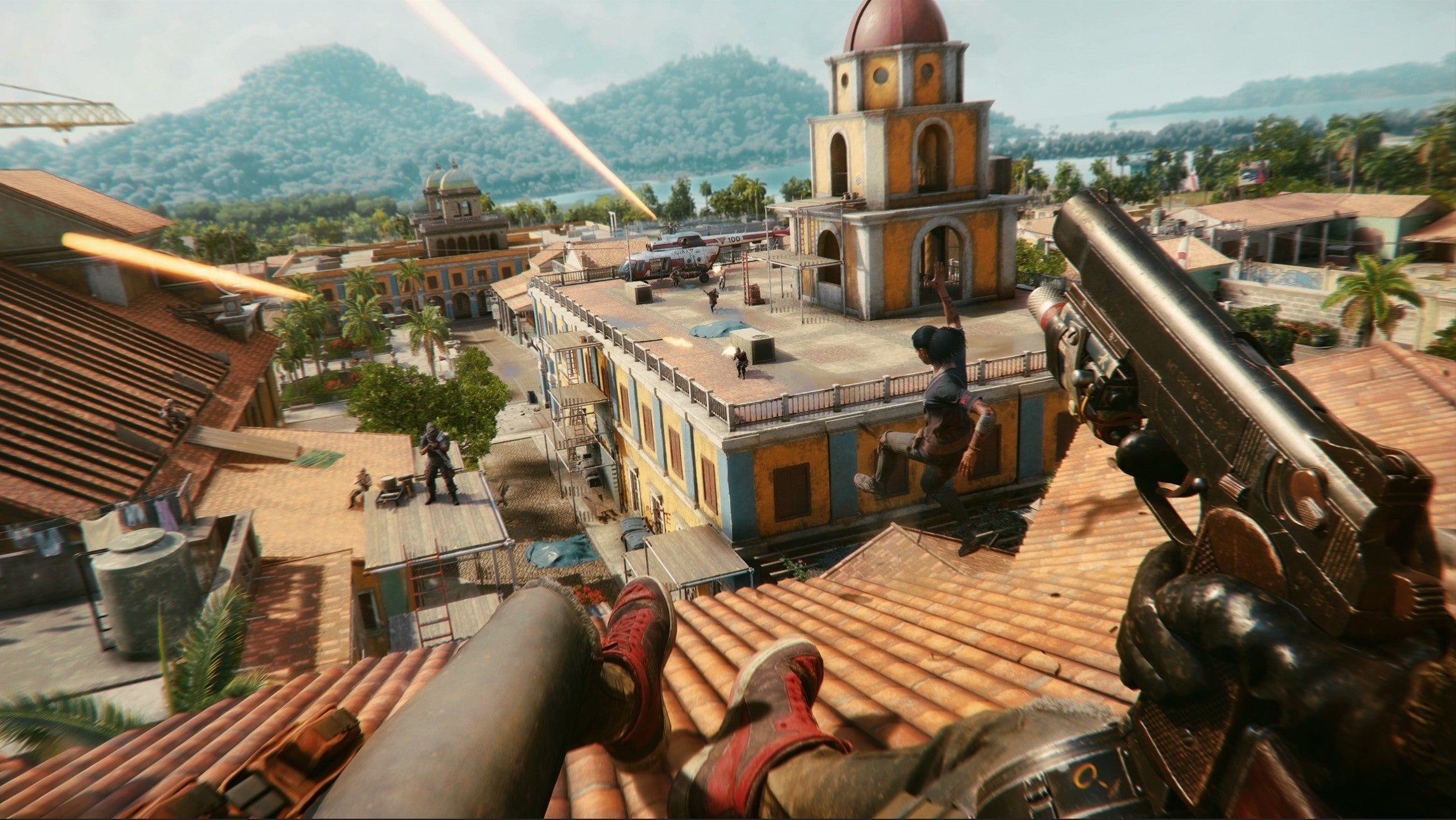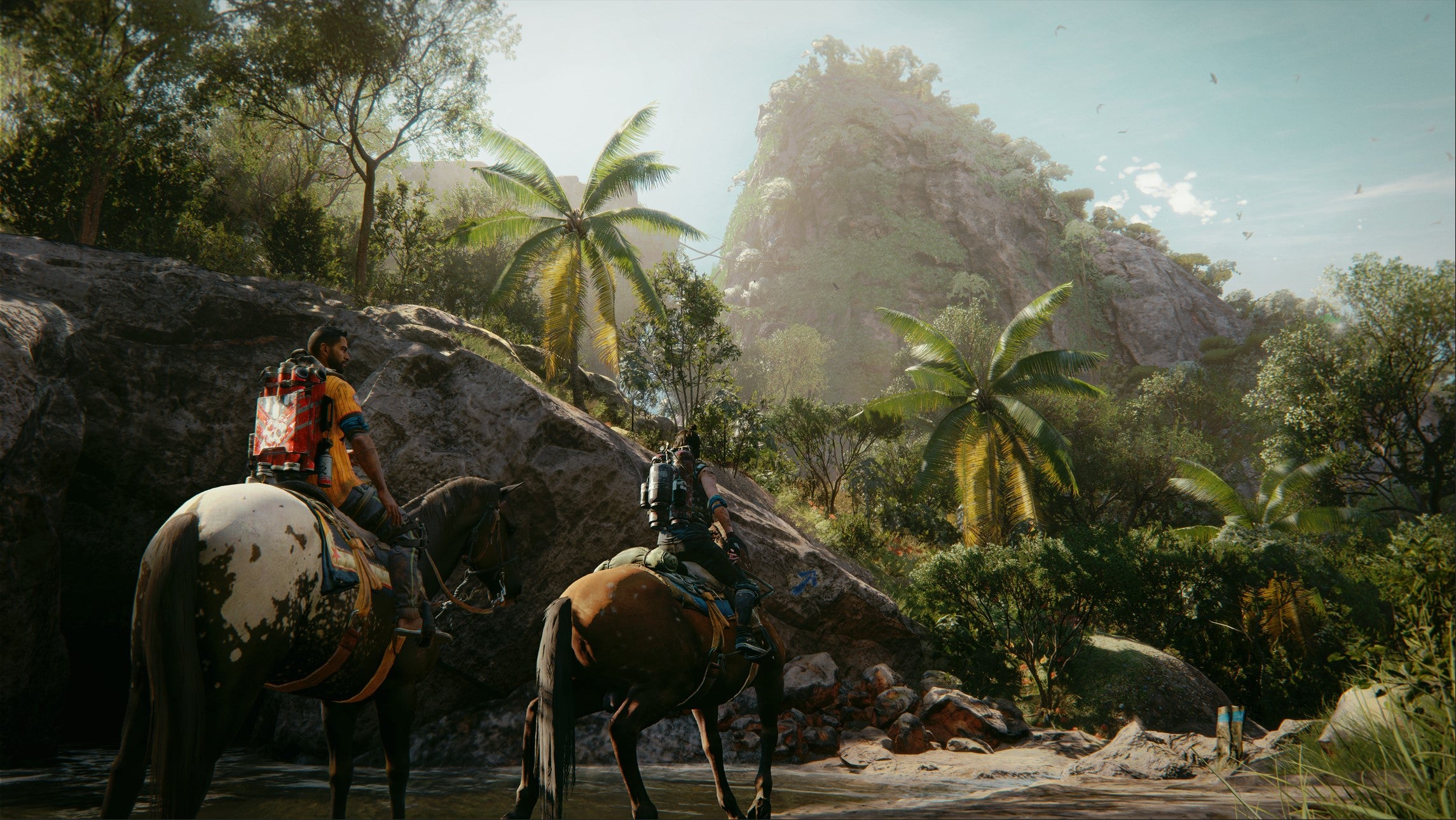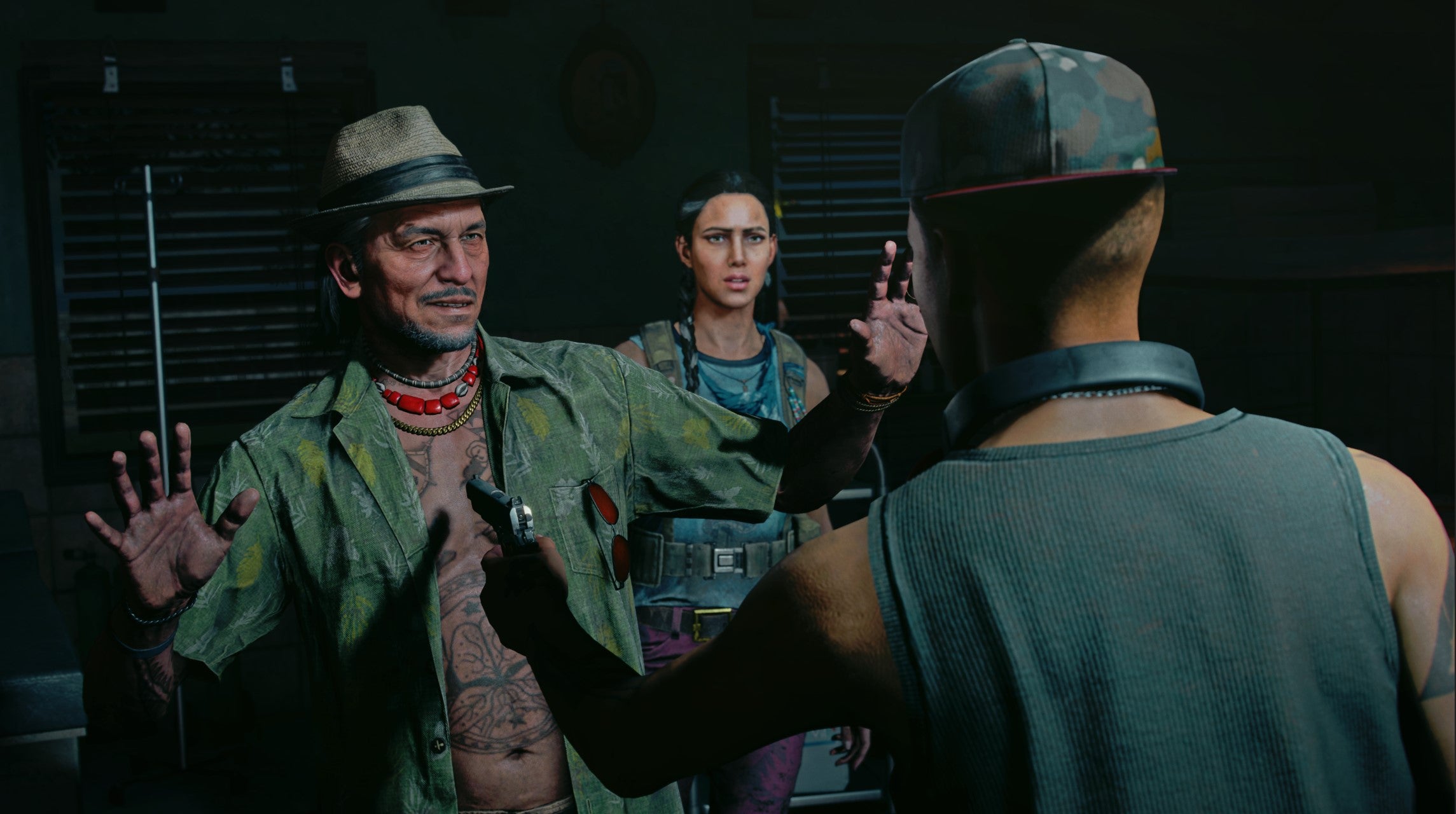Where Assassin’s Creed has managed to shake its label of ‘derivative and the same every time’ by embracing RPG mechanics, an emphasis on storytelling over repetitive mission types, and strikingly different historical locales, Far Cry - at least on the face of it - doesn’t seem to have the same luxury. For one, it’s a shooter at heart, and within a similar engine there’s only so many ways you can press a button to make a man fall down. And second - outside of a stone-age sojourn with Primal - the series is pretty wedded to a hundred years either side of the present day give-or-take. But the more you play Far Cry 6, the more you notice the similar tricks Ubisoft has used to maximise and diversify its giant open worlds. Like in Far Cry 4, the series’ answer to not having history to hang a game on is to make its own. The action centers around the isolated Caribbean island of Yara where you work to overthrow the country’s megalomaniac dictator, Anton Castillo - with events loosely styled after the Cuban Revolution, just evil-ed up for dramatic effect. Across a variety of islands, each boasting towns, jungles, castles, military installations, and guerilla camps, there are a vast array of richly detailed locations and environments to explore. But rather than get bogged down in the minutiae of trying to make the setting seem realistic, it seems pains have been taken to make these immense and densely populated spaces as frictionless as possible to navigate. It feels like this is to try and keep the pace high and cut out as much downtime as possible - a bit like the ‘what are you going to explode next’ ethos we see in the Just Cause series. In a mid-game area that I had hands-on time with, the particular island was positioned around a mountain-top guerilla village which, once you’d platformed your way to the top, served as a literal jumping off point - whether that’s by wingsuit or insta-spawned helicopter - to extreme sports your way to pretty much any objective in the area. Of course the squirrelly driving also returns, but summoning a car has been added to your quick-use weapon wheel, which again helps to give your roaming a snappier impetus. Another part of Far Cry 6 with more direction is its story. Where in Far Cry 5 you’d just see stars and randomly slump to the ground to be thrown into a main mission when the game decided you were having too much fun, this time around there are more traditional quest givers in your guerilla bases. This definitely helps you to feel like a more active participant in a grounded and present story, and is a departure from the last few titles which positioned the plentiful and diverse side quests as the real draw of the games. From the few hours of play I’ve had so far, the characters seem captivating enough, and are fun to interact with, if a bit predictable in how well they slot into the now-trademark Ubisoft corporate-mandated kooky-punk aesthetic mould. Slightly removed from this, though, is Anton Castillo himself, who I didn’t actually see that much in my hands on, and it remains to be seen how much of a constant part of the narrative he really is. But, I definitely feel like the star power of a name actor like Giancarlo Esposito was the right move. As mentioned earlier, it felt like the Far Cry formula was starting to get creaky with New Dawn, even down to the inevitable charismatic villain. Despite chewing the scenery more than a little, I think having a recognisable actor refreshes the antagonist role a lot, and was a very necessary step to make the new focus on story work. And it will also be interesting to see how the narrative’s political edge pans out in light of it drawing so heavily from the Communist revolution of Cuba. While Ubisoft has said that Far Cry 6 doesn’t make specific statements about the political situation of modern-day Cuba, it apparently does want to make wider commentary on nationalism and of peoples’ right to a free press and free elections. They’re events and issues that affected and affect the lives of millions of people, so hopefully in the full game they’re handled in a way that doesn’t come across as gauche when presented next to the series’ sillier elements. On the gameplay side, across the differently structured missions there are riotous set pieces aplenty and, happily, a few different types of activities too. Where in a lot of games treasure hunts can be box-ticking exercises of ‘X-marks-the-spot’, the few I took on in Far Cry 6 either had a difficult puzzle, multi-leg race, or some other gimmick attached. But you get all of the same kind of enemy outpost assaults and resource capturing that we’ve seen before in the series as well. While there’s definitely some different intrigue in there, you are still going to be playing through some action that will feel familiar if you’ve played a Far Cry before - the game even tries to meme on this at one point, breaking the 4th wall when you play through a mission that’s very similar to an early one in Far Cry 5. So for all the improvements Far Cry 6 does try to make, it still does seem to have some of the issues from previous games too. One I can speak to, is activity objectives encouraging you to be stealthy, but outside of being able to crouch a little, the game not really giving you much in the way of engaging tools to make that a compelling way to play. Why give me a backpack rocket launcher and a gun that shoots bootleg CDs, then offer bonuses for not using them? It’s sadistic. But despite these weaknesses, my time with Far Cry 6 left me wanting to play more, which isn’t something I’ve felt since Far Cry 3. The series has always been enormous, dense, and beautiful, but now I actually want to find out what’s around the next corner.



